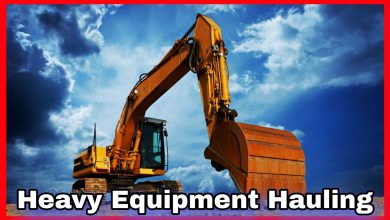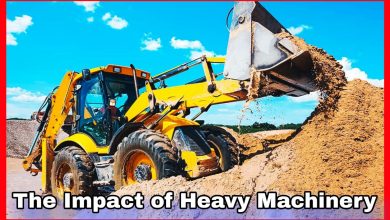equipment
Mining Trucks Unveiling the Powerhouses of the Extractive Industry
Mining Trucks Unveiling the Powerhouses of the Extractive Industry

Mining Trucks Unveiling the Powerhouses of the Extractive Industry
In the world of heavy-duty machinery, mining trucks stand as the true powerhouses of the extractive industry. These colossal vehicles play a pivotal role in the mining process, helping to extract valuable minerals, ores, and resources from the Earth’s crust. From their inception to their modern-day innovations, mining trucks have evolved significantly, reshaping the landscape of mining operations. In this comprehensive guide, we delve into the world of mining trucks, exploring their history, features, and the technology that propels them forward.
Evolution of Mining Trucks
Early Innovations in Mining Haulage
The roots of mining trucks trace back to the early 20th century when the demand for efficient material transportation was on the rise. During this era, rudimentary horse-drawn carts were used to move extracted minerals short distances. However, as mining operations grew in scale, more innovative solutions were needed.Introduction of Mechanical Haulers
The advent of mechanical haulers in the mid-1900s revolutionized mining operations. These early mining trucks were powered by internal combustion engines and could handle larger loads over longer distances. Their introduction marked a significant leap forward in mining efficiency.Advancements in Payload Capacity
Over the decades, mining trucks underwent continuous improvements, especially in terms of payload capacity. Manufacturers worked tirelessly to enhance the trucks’ mechanical structures and engines, enabling them to transport heavier loads of materials. Today, some mining trucks can carry hundreds of tons in a single haul.Key Components of Mining Trucks
Engine and Powertrain
At the heart of every mining truck lies a powerful engine that provides the necessary torque to move substantial loads. These engines are engineered to withstand extreme conditions and deliver high levels of performance. Modern trucks often feature advanced emission control systems to minimize their environmental impact.Chassis and Suspension
The chassis and suspension systems of mining trucks are designed to endure the rigorous demands of off-road operations. Robust suspension components ensure that the truck can navigate uneven terrains without compromising stability.Hauling Mechanism
The hauling mechanism of mining trucks typically consists of a large bed, also known as a “dump body,” that can be raised to unload materials. This mechanism allows for efficient unloading, reducing downtime between trips.Modern Mining Truck Technology
Autonomous Haulage Systems
One of the most significant advancements in mining truck technology is the development of autonomous haulage systems. These systems use sophisticated sensors, GPS, and AI to enable trucks to operate without human intervention. This technology enhances safety and efficiency in mining operations.Fuel Efficiency and Sustainability
In recent years, manufacturers have focused on improving the fuel efficiency of mining trucks. Innovations in engine design and hybrid technology contribute to reduced fuel consumption and lower emissions, aligning with the industry’s push towards sustainability.Safety Enhancements
Safety is paramount in mining operations, and modern mining trucks come equipped with a range of safety features. These include collision avoidance systems, cameras for enhanced visibility, and real-time monitoring of driver behavior.The Role of Mining Trucks in Operations
Overburden Removal
Mining trucks play a critical role in removing overburden – the layer of earth and rock that covers valuable minerals. By efficiently removing overburden, mining trucks expose the underlying minerals, making them accessible for extraction.Ore and Material Transport
Once minerals are extracted, mining trucks transport them to processing facilities or storage areas. The ability to carry large quantities of materials in a single trip streamlines the logistical aspect of mining operations.Challenges Faced by Mining Trucks
Operating in Extreme Environments
Mining trucks operate in some of the harshest environments on Earth. From freezing cold to scorching heat, these vehicles must endure extreme weather conditions without compromising performance.Maintenance and Downtime
The maintenance of mining trucks is a complex process that involves regular inspections, repairs, and component replacements. Managing maintenance effectively is crucial to minimizing downtime and maximizing operational efficiency.Innovations Shaping the Future
Electrification of Mining Trucks
As the world shifts towards cleaner energy sources, electrification has also found its way into the mining industry. Electric mining trucks offer lower emissions and reduced operating costs, driving sustainability in the sector.Data-Driven Decision Making
Mining operations are becoming increasingly data-driven. Modern mining trucks are equipped with sensors that collect valuable operational data. This data is analyzed to optimize routes, predict maintenance needs, and enhance overall efficiency. Mining trucks stand as giants in the world of heavy machinery, driving the success of mining operations worldwide. From their humble beginnings to their cutting-edge technology, these vehicles have reshaped the industry’s landscape. As technology continues to evolve, mining trucks will play a vital role in the future of resource extraction.FAQs
- How big can mining trucks get? Mining trucks can vary in size, with some models capable of carrying over 400 tons of material in a single load.
- Are autonomous mining trucks safe? Yes, autonomous mining trucks are equipped with advanced sensor systems that enable them to navigate safely and avoid collisions.
- What fuels do mining trucks use? Mining trucks primarily use diesel fuel, but there is a growing shift towards electric and hybrid options for reduced emissions.
- How do mining trucks affect the environment? Mining trucks can have environmental impacts due to fuel consumption and emissions. Efforts are being made to improve their sustainability.
- What is the lifespan of a mining truck? The lifespan of a mining truck can vary based on factors such as maintenance, usage, and technological advancements, but it’s typically around 20-25 years.
Tags
Mining Trucks
URL Copied



